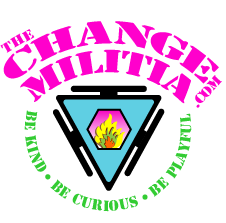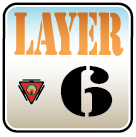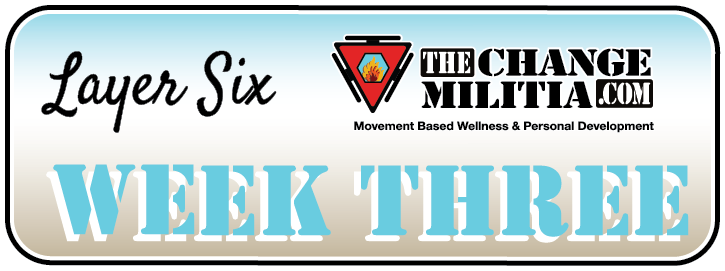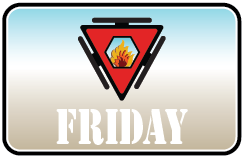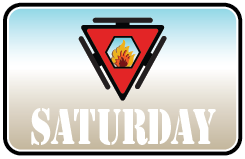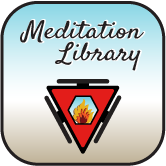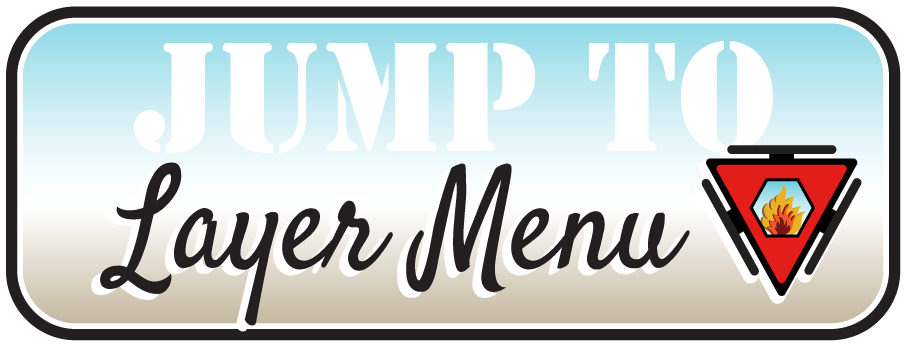The practices in Layer One, Week One were Current30, Sit and Unwind, and Feel Your Footfalls. Revisit one or more of them and feel for how you experience them differently. If you only have time for one, I suggest Feel Your Footfalls.
Over the next three weeks, I am going to take you back and review the first 5½ Layers. My aim is to reintroduce the material to the new you. Your context has changed, your awareness and balance have changed. I’m hoping it will be like watching a hockey game after you have spent a season learning the rules and strategy.
As you review, try to somatically connect with the content. Try to feel the sensations of the impact and influence being presented. Sense, in your body, the foundational nature of the content from your current state of being.
This might get intense, if it starts to feel like too much, take it a little slower. Maybe linger for an extra day or two until if feels like you have integrated the material.
Layer One, Week One – Concepts
Layer One introduced the concept of resistance, the place where you hoard, hinder, or compress the flow of energy. Resistance is the physical, mental, and emotional manifestation of your fear.
The movement we talk about in Movement Based Personal Development is life-force (energy, prana, ch’i, mojo, Shakti, Manitou divine spark, Qi, élan vital, aura, The Force). Physical movement is the primary doorway to understanding energy configurations because physical movement most closely mirrors and translates to energy movement (life-force).
Discomfort is a sign that there are more stimuli (energy) present than your subconscious mind judges that you can digest safely. Your subconscious mind is constantly looking to limit you.
As you can identify your energy and its configurations, you will able to learn to direct the flow of that energy toward your intentions, aspirations, and proximal objectives (to-do list, short-term goals). As you can direct the flow, your life will find increasing moments of effortlessness and fluidity. The fluidity and effortlessness arise from the seamless integration with your environment. You will come to know and feel yourself and you will be able to recognize yourself in others. Recognition leads to empathy, a feeling of shared experience, and community.
When you understand what someone is feeling (their current energy configuration) and begin to communicate with that fear instead of reacting to their words, you will gain intimacy, empathy, and insight. Your communications will become transparent and effective.
Layer One, Week One – Focus
Here, we introduced the Current30 by asking you to take 30 seconds and feel what you are feeling without labeling the sensations.
We asked you to become aware of and detail your routines, patterns, and habits. To find and acknowledge the percentage of your day that they occupy, monopolize, and dominate.
We challenged you to take a dozen of your habits and make a different decision. (Don’t overthink it, just choose differently. Start small. Forget about good/bad, better/best, should/shouldn’t; just choose differently.)
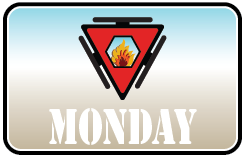
Layer Six, Week Three – Monday
- Read Monday’s Concepts
- Review Layer One, Week Three and Week Four Video(s)
The practices in Layer One, Week Two were Square Breathing and Sensory Awareness. Revisit one or both and feel for how you experience them differently. If you only have time for one, I suggest Square Breathing.
Square Breathing was shown in four parts. You can watch all of them in layer one content here. Sensory Awareness had two parts. Watch both here
Layer One, Week Two – Concepts
There is no good or bad energy, it is all energy. If it is moving, it is positive. How you label energy is a choice you can make. Stressed Out and Overwhelmed are labels you typically assign when your energy level is uncomfortable. What you do when the energy levels get uncomfortable are the habits that you employ to burn the excess energy. They are things like sugar, alcohol, or drugs; excess food, exercise, or sleep; anger, resentment, or depression; drama, pain, or conflict. Basically, anything and everything that you typically do that doesn’t have long term benefits is your subconscious mind trying to burn excess energy.
Your opportunity is to decide what to do with the energy you have. If it feels like you have too much, choose to expend it on something beneficial instead of on something habitual. When you tolerate the healthy discomfort of being full, your container adapts and gets bigger.
When you consciously and tenaciously challenge your sub-optimal habits, your habits will change. The first step is to recognize that all your stories, images, truths, and beliefs about the world are fiction that your subconscious mind creates to keep you small, limited, and downtrodden.
Every belief you have is limiting you in some way, creating walls, floors, and ceilings.
Healthy growth and adaptation require healthy discomfort. You gain strength, flexibility, and fluidity through adaptation. Your bodies (mental, emotional, and physical) will try to adapt to healthy discomfort, to expand your range and capacity to include your current accumulations and expenditures.
You can rewrite what is normal, typical, and habitual when you consistently do things differently.
Empathy (the ability to feel what others are feeling) starts by beginning to have a fuller sense of what you are feeling. Your emotions are a composite of your sensations
Layer One, Week Two – Focus
Current30’s on physical sensations, emotions, state of mind.
Listen to your excuses and ask yourself if they are actual and factual … or inventions and projections.
Pay attention to the value you assign to actions, people, places, and things.
Track how often you are fearful and how often your everyday actions, thoughts, emotions, and habitual movements are made without a conscious decision.
The practices in Layer One, Week Three were Feel the Soul of Discomfort and Sit and Unwind, Level Two. Revisit one or more of them and feel for how you experience them differently. If you only have time for one, I suggest Sit and Unwind, Level Two.
Layer One, Week Three – Concepts
The quality and timbre of your life is largely determined by the choices you make, the value you assign, and the challenges you allow yourself to embark upon.
If emotions are feelings … you are feeling something. If you are feeling something, there are sensations present. So, if you have emotions, you have sensations. Sensations are not inherently good or bad and don’t have any specific value. You always have sensations and your subconscious mind constantly tries to take your current set of sensations and label them as a some previously felt emotion or emotions. Your subconscious mind keeps flashing those labels to your conscious mind until it grabs onto one.
You have tens of thousands of thoughts a day and choose to concentrate on only a small handful. From this handful, you determine what you focus on, judge, value, long for, resist, judge, and demand.
Your feelings, thoughts, and personalities are all decisions you make but most of them happen in the background, outside the scope or range of your conscious mind … until you start focusing on them.
After you bring something into your conscious awareness, you have the ability to make a decision, to decide for yourself what to do with this awareness. Awareness is power, the power to determine, direct, and distinguish where you are currently and where you want to go next. You can use awareness as a constant feedback loop to increase your efficiency, productivity, and fulfillment.
Awareness highlights opportunities. The more aware you are of your environment, internal and external, the more likely you are to see and feel new possibilities and opportunities.
The ways you burn off extra energy, I usually call diffusion. You get overly energized and do something to return to a more familiar level of energy. As a clue, everything you do that doesn’t have a positive return on your investment of energy is almost certainly diffusion.
You might think of it as the ways you regain the middle ground. What do you do when things get too? What are your typical responses when you are too hot, cold, too hungry, too quiet, too loud, too tired, too stressed, too worried, too impatient, too intimate, too lonely, or too horny? What do you do when you are too mad, sad, or glad? How do you react when you feel abandoned, ignored, praised, appreciated, grateful, jealous, or loved?
Your diffusions act as fun police. They keep you in a middle range away from the spectacular and the unknown. Thwart them, take your Winnebago into space.
Layer One, Week Three – Focus
When you catch yourself doing something habitual, become aware of how familiar it feels in your body. Even if it is unhealthy, it will feel safe and your resistance to it will be minimal.
Begin to connect the labels you assign to the sensations present in your body. What are you feeling and what sensations are present when you assign a label? Where area of your body is most affected?
Be aware of how people, places, and situations influence your body. Feel yourself tense or relax, become defensive or feel safe, and the increase or decrease your presence. Where, when, and with whom do you typically perk up, space out, compress, and expand? Who, what, and where do you typically resist? Can you allow yourself to make a different choice (configure yourself differently)?

Layer Six, Week Three – Wednesday
- Read Wednesday’s Concepts
- Review both of Layer One, Week Six Video(s)
Layer One, Week Four – Concepts
You probably do things to relieve stress: exercise, medication, meditation, alcohol, food, sex, or therapy. So, in effect, stress is draining your energy and then you are exerting more energy trying to relieve it, creating a double deficit.
You are using stress like a thermostat, pressure release valve, or energy regulator. What if you create stress just so you can do something else to relieve it? What if you could learn to devalue your stressors and eliminate that holding of energy? And most importantly, what if all the energy you are expending worrying about stress, being stressed and relieving stress could be spent on other things (things that bring you happiness, fulfillment, and success)?
A significant portion of your personality is utilized to limit potential, reduce options, and restrict growth, to keep you firmly entrenched in the familiar.
As you look to reconfirm your familiar ranges, it requires a dissipation of your excess vitality. You vent … with anger, sadness, injury, suffering, disease, jealousy, gossip, over-eating, under-eating, addiction, judgment, projection, subjectification, demand, blame, stress, Netflixing, over-exercising, etc. All these require and bleed energy, leaving you less vital.
Familiar and comfortable aren’t necessarily healthy. Smoking can be both familiar and a comfort. It is not healthy.
How you vent, your psychological and physiological diffusions, deficits, and dysfunctions become the WAY not the why that you are sub-optimal.
Your personality is the combination and culmination of your habits. It is not who you are. Your personality reflects what you typically do. Your personality isn’t hard wired; it is habit wired. Change your habits and you will change your personality.
Your dysfunctions, addictions, ailments, drama, and stories are the way you maintain a limited presence. They provide ways to diffuse any abundance of energy your subconscious mind believes is a threat.
You give yourself an opportunity to make different decisions when you challenge your familiar patterns (compensations). As you consistently make different decisions, you change your habits. As your habits change, your personality changes; you change!
Compensations include mental and emotional things like stress, blame, resignation, jealousy, frustration, impatience, disconnection, anger, sadness, grief, awe, excitement, detachment, and any variety of fear.
Physical compensations include tension, addictions, food, nail biting, foot tapping, gesturing, sex, exercise, and napping. Yes, even napping. Each of your compensations will burn energy and return you to a range that is typical, habitual, and to some degree, manageable.
These ranges are fictitious. As you get close to the edges of your familiar range; your mental, emotional, and physical bodies prepare to react, compensate.
Layer One, Week Four – Focus
Is the tension, stress, and overwhelm you feel required? How does it benefit you? How does it limit you? Can you continue without it? What might change if you choose not be tense, stressed, or overwhelmed?
See if you can feel yourself transition as you start to get tense, stressed, or overwhelmed. Catch yourself in the act. And then see if you can convince yourself to choose differently. Smile, soften, shake like a wet dog, and then go about your day.
Feel for the times when you habitually or reactively assume a habitual physical, mental, or emotional configuration. How do your physical postures, mental positions, and emotional labels change as your environment or the people in it change?
The practices in Layer Two, Week One were Sit and Unwind – Level Three and Standing Meditation -Identifying Center. Revisit one or both. Feel for how you experience them differently. If you only have time for one, my suggestion would be Standing Meditation -Identifying Center.
Layer Two, Week One – Concepts
There are several levels of compensation in everything we do. We are never 100% involved, committed, or invested. Compensation and resistance are how we limit our presence, connection, and engagement.
Every movement, action, and decision has some form of resistance and compensation. When you can highlight them, you give yourself the opportunity to begin to alter, mitigate, or change them.
The square breath practice connects the seasons into a loop. Once your subconscious mind relaxes into the loop, it begins to feel safe, loosens control, and then things start to move onto the next season in the sequence. If you are stuck, you stop the process just before the season that holds the most fear for your subconscious mind.
You are stuck in your stuck places because your subconscious mind fears what it projects will happen in the next season or stage. It is afraid of change and the possibility of the pain it perceives might accompany that change.
Let’s explore each of the seasons in turn as it relates to the Four-Part Breath (Inhale – Top Hold – Exhale – Bottom Hold). The inhale is Spring, full of birth, growth and potential, a blossoming adolescence. The inhale holds the fear of your enoughness, and the possibility of a new life.
Your inhale is the season of opportunity and expansive transformation. It is Eros, the God of Love. It is the season of the illicit, the prognosticator of the previously inconceivable. Your inhale is the rule breaker and the taker of chances. Your inhale initiates movement and accepts a challenge. The inhale is the season of intuition and knowing. It is confidence and certainty.
Summer is the top hold, the confirmation of your enoughness in a wave of abundance. The full lungs of the top hold give you all the tools you will ever need. The top hold nullifies the excuse of insufficiency. It offers the opportunity to exist without limits. The top hold is the placeholder for the fear of success and your fear of fearlessness. The top hold is also the birthplace of conformity. It is the way you constrain fulfillment, happiness, and playfulness.
The top hold is the placeholder for the fear of success and your fear of fearlessness. It is the place where you hold on to your possessions, whether they still serve you … or not. If you hold on to your breath, or anything else, too long it becomes toxic. To laugh, you must exhale; holding your breath keeps that from happening.
The exhalation is Fall, a falling off of current potential and a letting go of everything that no longer serves you. Your exhale challenges your perceptions of attachment, ownership, demand, entitlement, and expectation. Exhales are the season of indecision, the bi-polar season of self-doubt and determination.
Leaves are lost but seeds are born in every exhale. Every exhale is the acceptance of effort, determination, and hard work but also feeds the feelings of failure, incompleteness, and lost opportunities. Your grief lives in your exhale but so does your laughter.
Exhales are the current failures that make room for future successes. When you exhale, you are taking a chance. You are trusting that the next inhale is going to come. You are believing in yourself and your ability to manifest. Exhales are full of incredulity and raucous laughter. The exhale is the season of fulfillment, appreciation, and gratitude.
Your exhale is the distinctly uncomfortable opportunity to let go, an opportunity you have 20,000 times a day.
Winter, the bottom of the breath, slowly builds a vacuum where all potential is conceived. The bottom of the breath is silence, the silence where your God(s) speak to you. It is the time where prayers settle, it is the life everlasting of deep space. The bottom of the breath is the beating heart of contemplation and reflection.
The bottom of the breath is the season of decay, deconstruction, poverty, and exhaustion. It is the black and white of heaven and hell. It is the worthlessness of intolerance, judgment, and hate.
It is the time to remain empty, surviving harmoniously in quiet lack until a death occurs. Winter reveals the meaningless nature of all things, every action, hope, and dream. It is completion. The bottom of the breath is where grief is digested, metabolized, and turned into fuel.
Layer Two, Week One – Focus
Increase your awareness around the typical ways you allow yourself to be distracted. See if you can become aware of what triggers your distractions. Next, see if you can figure out what you were feeling before the trigger. Feel for the fullness before the distraction. Let’s call it your pre-trigger state. Something alerted your subconscious mind to a perceived danger. Feel for it. The sequence is pre-trigger, compensation, trigger, distraction. The pre-trigger is the critical component to understand and identify.
That full quality is the key to adaptation, growth, and success. As you reach that fullness; if you don’t allow yourself to get distracted, your system will begin to adapt. Full will become normal and your subconscious mind won’t start looking for ways to diffuse your energy. Feel for the full, tolerate the healthy discomfort if offers, adapt, and grow your capacity to be focused, productive, and successful.
Get big, stay big, play big.
The practices in Layer Two, Week Two were Square Breath Affirmations, Square Breath – Level Three, and Sensation Awareness – Level Three. Revisit one or all three and feel for how you experience them differently. If you only have time for one, my suggestion would be to watch the Square Breath Affirmations again.
Layer Two, Week Two – Concepts
To grow, to progress, to achieve effortlessness; you must let go of what is holding you back. The universe is in a state of constant expansion, perpetual movement, and unending cataclysmic change. You are a part of the universe, a part of everything it does, a part of the magic of constant expansion … unless you put sufficient energy into resisting that expansion, movement, and change.
Every second, the Earth is moving 18.5 miles around the Sun. Our solar system is moving around the Milky Way galaxy which moves around the Local Group of Galaxies. Stillness is an illusion; you are moving a couple of hundred thousand miles per hour as you read this. Every movement, action, and decision has some form of resistance and compensation. When you can highlight them, you give yourself the opportunity to begin to alter, mitigate or change them.
Begin to question, be curious, and explore your movements, actions, and decisions. Look for the compensations and resistances you use and when you find them, challenge yourself to be a little more engaged, involved, and connected. Be persistent. Your subconscious mind is going to fight you; it wants you to be average. It strives to constantly moderate your decisions toward mediocrity.
You can kick its ass or be half-ass, the choice is yours.
I’ve put together a list of energy configurations as the gross indicators of your degree of receptivity and your levels of opposition and resistance. Your current and habitual moods (resistance configurations) will fall into one or more of these categories:
- Stagnant – Low, weak, and unmoving, stuck, lethargic, depressed;
- Compressive – Pent up, tense, strained, holding back, capitulated, constipated;
- Expansive – Growing, glowing, ecstatic, generous, blissful, elated;
- Transitive – Shifting, changing, unstable, mutable;
- Isometric – Pushing and pulling, conflicted, tense, passive aggressive, actively nonmoving;
- Isotonic – Unbalanced isometric, concentric, eccentric, leaning, tense, resistant but moving;
- Fluid – Effortless, flowing without resistance, carefree, fearless, relaxed, confident;
- Fluctuating – Unresolved, variable, searching for balance;
- Percolating – Compressed but beginning to move;
- Explosive – Instant decompression, hyper-reactive;
- Scattered – Unfocused, multi-directional;
- Bleeding – Leaking, dissipating, deflating;
- Accumulating – Drawing in, actively ingesting with limited expansion. Pressurizing.
Each of your bodies: physical, mental, emotional, energetic, and environmental might hold a different resistance configuration. You will have specific resistance configurations for your emotional body, mental body, and energy body. Your physical body parts will have different configurations based upon usage, patterns, injury, and the amount of tension you are holding. Your environmental or relationship configurations will be habitual and serve to provide a familiar distance between you and others or the world around you.
All the configurations in each of your bodies: physical, mental, emotional, and energetic are created and controlled by your subconscious mind … until you make them conscious and decide to configure yourself differently. Decide wisely and often. Be fluid.
As you get better at identifying what your configurations are generally and specifically (through Current30’s); you can begin to alter and change them. If you generally feel stagnant, you will have tools to determine where specifically the stagnation exists. If you are mentally stagnant; you can use some of the meditations to energize yourself. If you are physically stagnant, you can start moving, focusing on the body area that feels the most sluggish. If you are emotionally stagnant, pick a meditation that upwells emotional energy or just relive as somatically (in your body) as possible some highly charged event in your life and feel your emotional body enliven.
Movement brings about change. When challenged in a healthy way, the systems begin working together, overcoming fear, resistance, and the subconscious mind’s desire to hold onto pain. Getting unstuck starts with a choice, is fueled by determination, and gains momentum as you celebrate your successes.
When you lower your resistance, an uber-natural harmony and resonance is created, sometimes instantly. As your harmony increases, your capacities and capabilities expand.
Layer Two, Week Two – Focus
Explore the feelings of your energy in more depth. As you read this, what observations can you make about your energy? If you are sad, mad, or glad, what sensations are you associating with the label? What do each of your labels feel like?
As the electro-magnetic energy moves through your body it will collect wherever there is resistance. That lump in your throat when your emotions are upwelling is an example. Butterflies in your stomach, trouble breathing, nausea, and stomach cramping are all examples.
What does it feel like in your body when you hold yourself back? When you think someone is holding you back? What sensations arise when you do (or contemplate doing) something that isn’t in line with your values? How does dishonesty (yours or others) feel in your belly and back?
The movements of energy you have been experimenting with this week trigger your subconscious mind or your subconscious mind triggers them. Feeling and understanding your energy flows will give you amazing insights to your preferences and biases. Begin to connect your energy flows to your thoughts and your thoughts to your energy flows. Observe how your emotions alter your energies and your energies influence your emotions.
The practices in Layer Two, Week Three were Sit and Unwind – Level Four and Walking Meditation – Moving Center. Revisit one or both and feel for how you experience them differently. If you only have time for one, I suggest Walking Meditation – Moving Center.
Layer Two, Week Three – Concepts
Images and beliefs are the preferences and judgments that you default to. I don’t like brussel sprouts. The Orioles will never win the World Series. I’d rather eat dinner at the same time every night. My parents were never there for me. Men even lie in their sleep. Big dogs scare me. I have deep psychological issues related to my obsession with orange ducks carrying transparent umbrellas. Everything you believe to be true as a default (without determining its veracity in the moment) creates a bias, preference, and a prejudice. Every belief you have creates an imbalance in your thinking, feeling, and posture.
Images and beliefs generate your demands. Your subconscious mind wants (demands) things to continue to be how they have been. Demands are the rules by which your subconscious mind determines safe/unsafe, good/bad, right/wrong, and want/don’t want. Demands are the walls, floor, and ceilings your mind erects to limit your potential and the possibilities you can identify.
Demands necessitate that your energy be funneled toward encouraging one outcome and discouraging all other outcomes.
Demands dictate your behaviors. They are the reactions to your fears. When you divert enough energy to them, demands will trump every intention you hold. When demands become your driving force; they become how you react and who you are.
Your demands become your nature and form the all the limiting aspects of your personality.
Your subconscious mind likes ruts, excuses and quitting. It feeds off fear and drama. It is the overseer of the limiting habits that make up the majority of your personality.
Beliefs are purses for the fears you clutch… sewn into sentences and fictional satchels of truth.
Here is an example that has probably led to the end of every relationship you have ever had. You are in a new relationship and everything is spectacular. Things go along great and gradually you get familiar with each other. The newness wears off and you fall into patterns. You start to notice that some of your partner’s patterns aren’t really that attractive. You judge them and then they increasingly start to annoy, frustrate, and vex you. You shift your image of the person from someone who is wonderful to someone who has some worrisome tendencies. Your belief that he or she is the one is progressively replaced by the idea that he or she might not be the one. Then your subconscious mind starts looking for further confirmation of his or her inadequacy … and you find it. Soon, you wonder what you ever saw in them. And then, it seems like a much better idea to be without them than with them. They haven’t changed; your predisposition has changed because you started looking for what was wrong instead of what was right. Your image changed because your belief changed.
Your mind starts a motion by having a notion, concocting a potion and then … making a drop into an ocean.
How has your definition of good breakfast and great relationship changed over time? Think back. Did you believe your previous definitions? Were they your truths? What happened? Were they true? If so, why aren’t they true now?
Your images, limiting definitions, aren’t actual or factual; they are proximal and situational. You create images to predefine what you are going to consider as inside or outside your comfort zone. Predefinition requires predicting future safety parameters, placing a perimeter on potential possibility. Images define what you will value in the future as acceptable, desirable, and beneficial.
Beliefs are the feeling side of images, the emotional curtains you draw to keep out everything that might dawn outside the windows of your circumscribed and inadmissible horizon.
Most of your beliefs were taught to you. The bricks in your walls: your parents, friends, community, society, and culture, told you what to think and how to be intolerant. Babies are not born racist, nationalistic, homophobic, or with any other fear, intolerance, or hate. Your parents taught you or modeled for you how honest, kind, and generous you should be.
Your demands and habits become the fictional comfort zones you create: the predispositions, fictional biases, of good/bad, right/wrong, should/shouldn’t, can/can’t, will/won’t, wanted/unwanted, and safe/unsafe.
Behaviors are the habitual consequences of your images and beliefs. You are the mouse and your images and beliefs are the walls of the maze. When you limit your options, the limited options are the only ones you see, not the only ones possible. Since the habitual behaviors are all that you see, they become all that you do. Habit becomes personality. Your personality isn’t who you are; it is the result of your images, beliefs, and behaviors.
Personality is the well-trodden path your habitual behaviors walk.
Images, beliefs, and behaviors are the root of your dysfunctions. They are the illusory excuses you create to limit potential and diffuse your vibrancy. Your dysfunctions all have demands, accompanying agendas, patterns, or components that you use to limit or deflate your vitality.
As you can recognize your demands, you can identify your habits and then distinguish your images, patterns, and beliefs. When you hang on to your beliefs, images, and patterns of behavior, they become the trap door below the noose.
Every time you challenge your subconscious mind successfully, it gets weaker and your conscious mind gets stronger. Your moment to moment awareness grows and you will react less habitually. Beneficial decisions will get easier to see and do.
As you begin to decide what your action is going to be instead of reacting habitually; you will begin to meet your intentions and find levels of happiness and fulfillment that you have never known.
Layer Two, Week Three – Focus
Explore the biases, stereotypes, and predispositions that influence you. Let’s start with your parents and grandparents. What did they offer up as truth when you were a kid? What beliefs did they hold that limited their ability to be tolerant and empathetic? How do their beliefs still influence you? What did you co-opt from them without conscious consideration? What did they do that resulted in separation and distancing from others? What did they believe that you still admire?
Consider the limited and prejudicial thinking of your friends, colleagues, and neighbors. What is normal, typical, and prevalent in their thinking, beliefs, and languaging? How does that reduce their ability to be thoughtful, tolerant, happy, kind, and compassionate? How does it create and maintain separation? How does it make them see things as black and white? How does it propagate Us and Them thinking?
How about you? How much of your judgment, prejudice, and intolerance come up without conscious thought? How do those things create distance and reduce opportunity? How are you small minded? What truths do you hold onto that create a box that limits your experience of life?
When you limit your thinking, you limit energy flow. Biases, stereotypes, prejudices, and predispositions are types of resistance.
